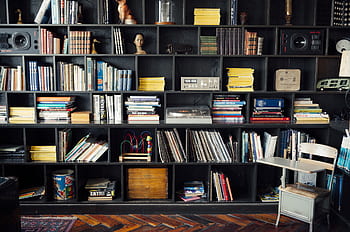Do you have piles of books all over the house? Have you ever wanted to reread a novel after seeing the movie, and you know you have a copy, but you just can’t find it? Did your parents downsize and now you have inherited many of their books? Now is the time to get organized! Get some empty boxes from the grocery store, grab a notebook, sticky notes and a pen, and let’s begin!
Break your project down into smaller steps
Start with one room at a time. Sort books into four categories: keep, toss, sell, donate. Pile sorted books on the floor in the middle of the room. Ask yourself, “Am I ever going to read this one again?” If you have not read it yet, do you think you ever will? Sell it or give it away. Remember that you can always get another copy at the library, a bookstore or as an e-book or audiobook. For gifts with inscriptions from loved ones, consider saving these for the next generation. Invite family members, friends and neighbors over to take titles you have decided to let go of. Box up donations as you weed, and move those boxes to the garage, the trunk of your car, etc. Throw out books in poor condition. When you get these weeded titles out of sight, your project will look more manageable and less overwhelming. Check with your library as to whether or not they accept donations before driving there with books you wish to donate. Some libraries have a list of organizations that would love to accept used books in good condition (assisted living facilities, preschools, etc.). Email or look on your library’s website, or do an Internet search for charities looking for donated books.
Start sorting the books in your keep piles. Decide which room you want to shelve these books in. Do you have a home office? Move books related to your job to that room, as well as nonfiction titles of a personal nature (losing weight, dealing with grief, financial advice, etc.).
Shelve the cookbooks you use most frequently in the kitchen. Start creating piles for different rooms, label and then move them to those rooms. Do you collect certain subjects (fairy tales, fly-fishing, local history, etc.)? Put a special collection on display in the family room or living room. What about art, humor or whimsy? Display a few titles on your coffee table.
Ask your kids to sort their book collections into two categories: keep or let go of. Children’s books go out of print faster, and a title in good condition could be sold or donated.
Reevaluate your shelf space

Bookshelves and desk
Do you need another bookcase? Wait until you are finished weeding before making a major furniture purchase. Be creative. Some end tables have space where you can put a few books, or stack some under your coffee table. Do you have several small, short bookcases? It might be a better use of floor space to purchase one tall bookcase and get rid of the small ones, or put them in a bedroom or home office. Storing books on the floor does not seem to work, as you will end up constantly moving them. Make favorite books visible in your living space outside of traditional bookshelves, such as using woven baskets and smaller shelving units that have other items on display. Rotate your collection; for example, display holiday stories in December.
Once you have weeded and moved your smaller collections to the rooms you want to keep them in, you may want to categorize even further. If your bookcases are not adjustable, you may have to sort and shelve depending on the height of the books. Very tall titles may have to be shelved flat. Do not put too many on top of each other, or allow books to lean, which puts a strain on the spines and can permanently warp books.
For some unusual, creative ways to store and display your books
Check out this fun video: 25 Creative Bookshelves Ideas Bookworms Need to Know
After dealing with shelf space and height, you may wish to categorize your books still further. Sort children’s books from adult books, and fiction from nonfiction. Sort “to do” nonfiction (gardening, drawing, exercising, birdwatching) from other types of nonfiction (history, art, biographies). Alphabetize your fiction by the author’s last name.
Find an online tool for organizing a home library
American Library Association Guide: https://libguides.ala.org/SettingUpaLibrary/HomeLibrary — The American Library Association has brought together a list of sources for organizing your personal book collection.
LibraryThing: https://www.librarything.com/ — This website and app by the same name allows you to create your own home library catalog, keep track of personal books loaned, and connect with other book lovers.
Libib: https://www.libib.com/ — This website and app has a free Standard version, and allows you to manage your personal collection of books, as well as movies, music and video games.
Advanced organization
Want to categorize still further? You can label and shelve your nonfiction by assigning Dewey Decimal numbers for subjects and shelving in numerical order and then alphabetically by the author’s last name. Check out this link, pages 7 through 18, for Dewey categories: https://www.oclc.org/content/dam/oclc/dewey/resources/summaries/deweysummaries.pdf
A three digit Dewey number is more general, while the digits to the right of the decimal point signify a more specific number. For example, 641 is cooking recipes, while 641.86 is desserts.
To search for a Dewey number from the Library of Congress, click on this link, and select “simple search” at the top of the page: https://www.loc.gov/z3950/#lc
When you have completed weeding your book collection, try doing it on a yearly basis! Keeping on top of this task will make the next time less onerous, and you may find that decision making is easier.
Do your kids need some help organizing their books and other belongings?
Take a look at the ideas in this video: How to Organize a Kid’s Bedroom

